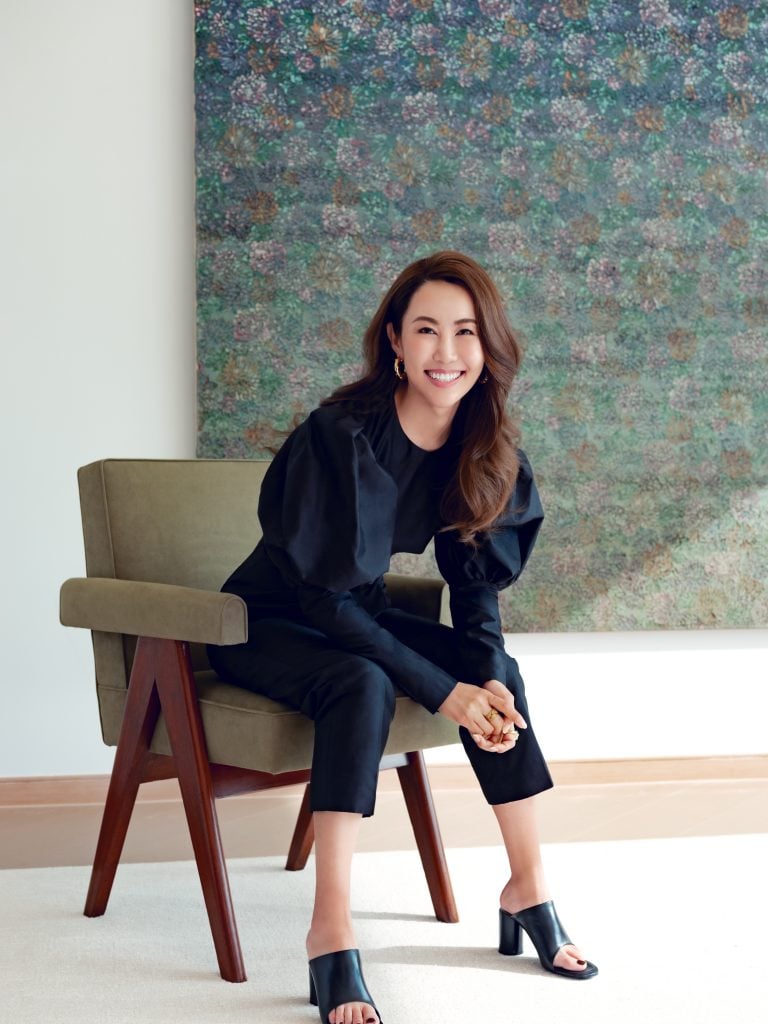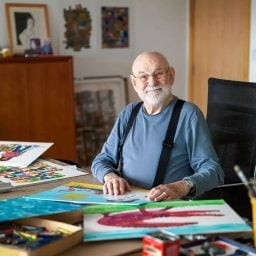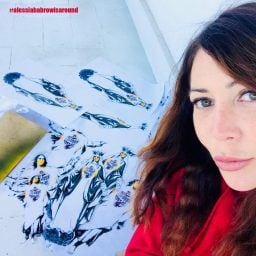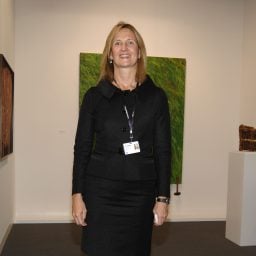“Art has always been part of my life and my memory,” says Yan Du, a collector based between Hong Kong and London.
Born in a city close to Beijing, Yan studied traditional Chinese painting as a child, but it was upon moving to London for her education that she says she truly fell in love with art. “When I saw works that I liked, I instantly felt this urge to live with them,” she said. “Therefore, collecting art became a natural next step.”
In the early years of her collection, Yan focused on women artists such as Louise Bourgeois, Georgia O’Keeffe, and Yayoi Kusama. But a decade later she noticed a gap in the wider world’s understanding of Asian art, which she increasingly felt had to be bridged. In 2019, she founded Asymmetry Art Foundation, a non-profit devoted to cultivating a broader understanding of and curatorial focus on contemporary art emerging in Asia through academic scholarships and curatorial fellowships.
We spoke with Yan about the artists she’s watching now, and why supporting arts from Asia means cultivating curators and critics, too.
Let’s start at the beginning. What was the first work you acquired?
It was a painting by Raoul de Keyser, which I bought when I was visiting New York about 10 years ago. A friend took me around to some galleries and I bought the work immediately after seeing it. It was my first significant purchase from a gallery so it has a special place in my heart.
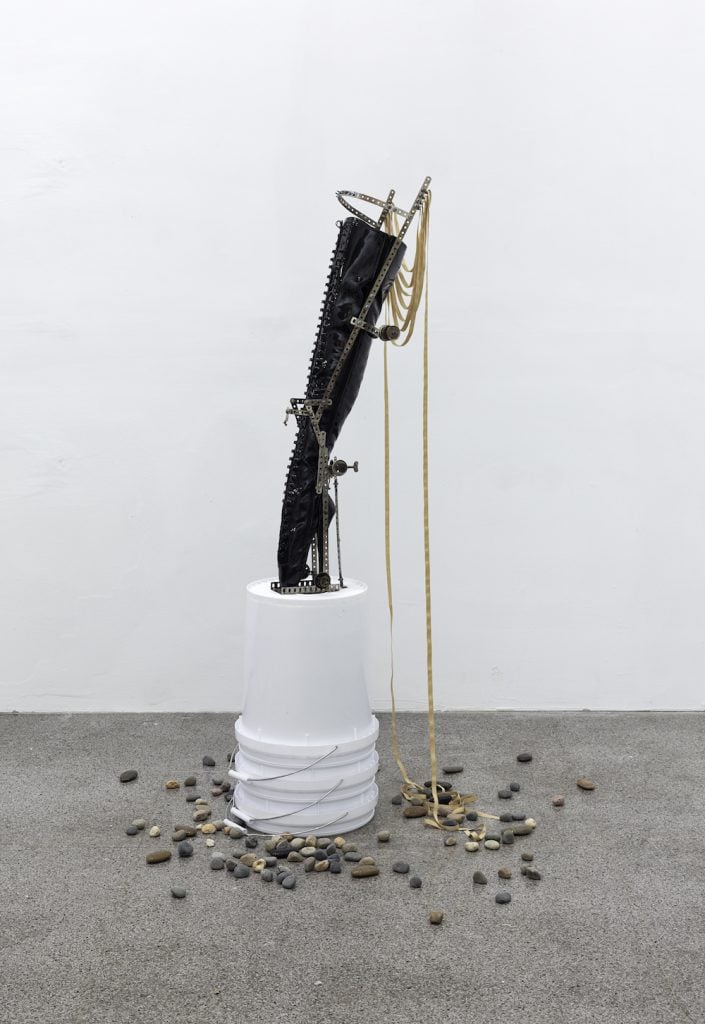
Sydney Shen, Thirst is the Mother of Corvid Ingenuity (2020). Courtesy of the artist and Gallery Vacancy, Shanghai. Yan Du Collection.
On the other end, what’s the most recent work you’ve acquired?
Sydney Shen’s Thirst is the Mother of Corvid Ingenuity (2020), which is both an installation and a sculpture. Its visual impact is very strong. It is composed of a black patent leather BDSM high-heeled shoe and other ready-made objects, such as buckets and ribbons. The work is a response to the story of Aesop’s fable “The Crow and the Pitcher,” in which a thirsty crow tries to drink water from a narrow pitcher and can’t reach it. Then the crow fills the pitcher with stones and it reaches its beak—it’s a story familiar to me from childhood. When I discovered that the boot in Shen’s work was filled with stones, each carrying the names of the different mountains on Mars, I became even more curious about the artist’s thinking. Humankind’s desire for knowledge and the unknown is like the crow trying to fill up the pitcher to reach the water—it is driven by instinct and fearlessness. In some way, it is also similar to the desire to be close to reality and truth through the process of collecting.
You spent a decade building a personal collection before founding the Asymmetry Art Foundation. What experiences led you to the decision to create it and why did you feel such an organization was necessary.
Through my engagement with the contemporary art world, I formed friendships with artists, and through their practices, I became aware of the importance of other practitioners whose contributions to a thriving art ecosystem are equally important: curators, writers, critics, and scholars. Foundations tend to support artists and I noticed a gap in the support of these practitioners that do vital work: creating dialogue, sharing knowledge, and introducing artists to their audiences. This is how the idea of a network of curators and the Asymmetry Art Foundation was born.
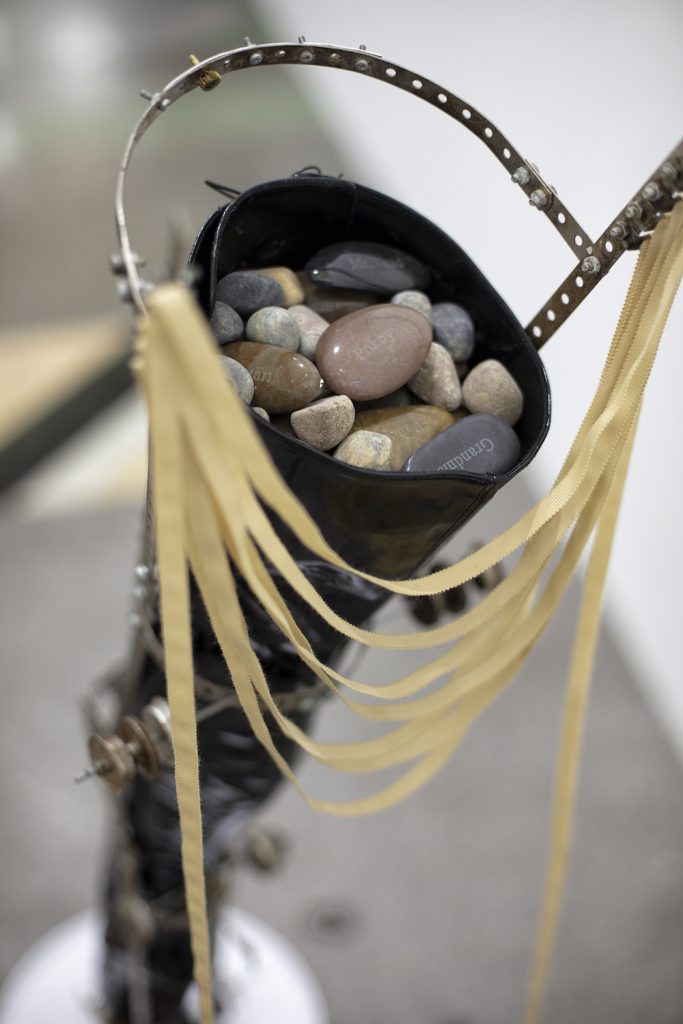
Sydney Shen, Thirst is the Mother of Corvid Ingenuity (2020). Courtesy of the artist and Gallery Vacancy, Shanghai. Yan Du Collection.
What role are you hoping to fill in the Chinese and global art community? What role does your own collection have in this?
My collection brings together global contemporary art and Asian contemporary art. After a number of years collecting art, I decided to establish Asymmetry, and through both the collection and foundation I have deepened my relationship with many academic institutions and museums. I have a strong sense of social responsibility for the art world and society in general that my role as a patron and philanthropist allows me to fulfill.
Collecting artworks can appear like photographic snapshots of a certain moment in time. However, creating opportunities for the continuous promotion of knowledge is an ongoing endeavor. Through the foundation’s support, we can cultivate young curators, criticism, and scholars, and indirectly through them, support exhibitions. This contributes to the wider art ecosystem. I have always believed that giving is gaining; contributing to society has changed my values and changed my life.
What do you think is most exciting about the current Chinese art world right now? What do you see as its future?
The pandemic has not yet ended and the art world in China is as cautious as in any other part of the world. Yet during this trying time, art institutions seem to be recovering at a rapid pace that I am so impressed by.
In recent years, Chinese contemporary art has developed very quickly. On an institutional level, exhibition quality is improving substantially each year compared to the last. On a creative level, artist practices are increasingly more powerful and speaking in a more global language, however, they still require more international attention and need platforms to present their work.
That’s why, in the post-pandemic world, Asymmetry Art Foundation will have a program that invites international curators and museum directors to visit important art cities in China. Through the work of the foundation, we want to convey the voices of the Chinese contemporary art world and strive to promote cultural exchanges through academic activities across the different contexts of East and West. We hope to guide Western art professionals and audiences into a better understanding of the whole picture of Chinese contemporary art through our activities, as there is still a long way to go.
What are some of the initiatives Asymmetry Art Foundation has underway?
Our first curatorial writing fellow, Hang Li, a curator based between Beijing and London, has started her placement at Chisenhale Gallery. She is currently working on a practice-led project that considers online community structures between artists, curators, and institutions at the intersection of technology and concepts of care and solidarity
In the autumn, we are looking forward to welcoming our curatorial fellow to Whitechapel Gallery in partnership with Delfina Foundation (where they will be a resident), and inducting Weitian Liu, our first scholarship holder, into the PhD program at Goldsmiths, University of London. Weitian Liu is interested in researching the notions of the civic and the civil within the institutional structures of organizations in the U.K., China, and Southeast Asia.
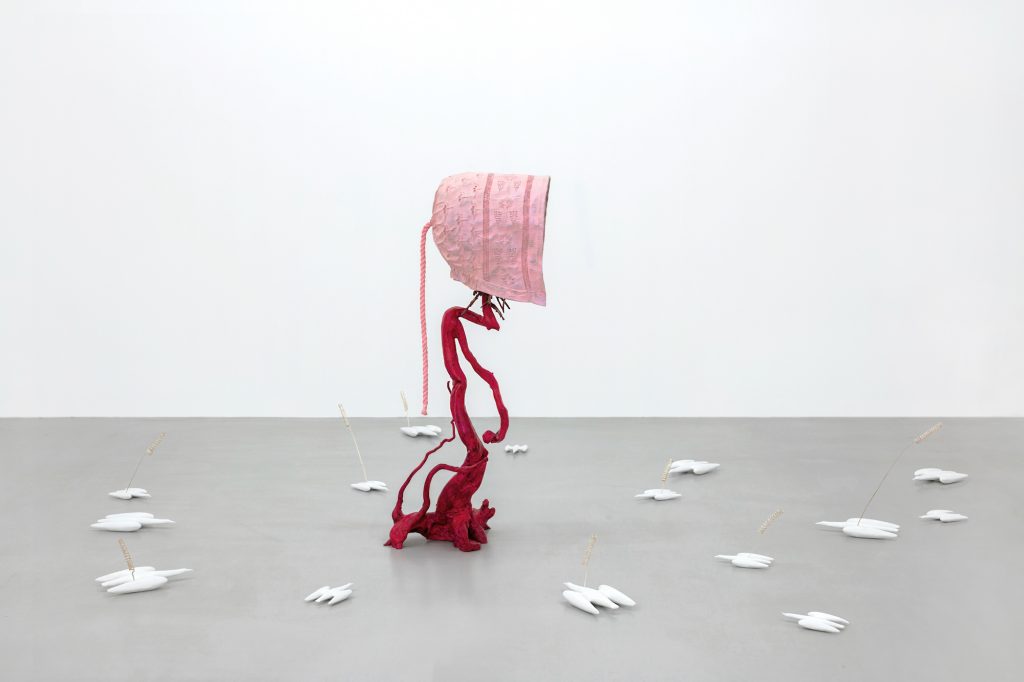
Guan Xiao, Lulu Bird Walked Out Of Delicatessen Bumped Into A Swarm Of Buzzing (2020) Courtesy of the artist and Antenna Space, Shanghai. Yan Du Collection.
How has the past year affected your mission?
Our foundation is based in London but, personally, I’ve been stuck in Hong Kong for a long time now. With our initiatives still very much in their infancy, we were catapulted into a void of uncertainty, and we quickly had to adapt our mission to the new normal. Thankfully, the need for opportunities for young curators and writers extends beyond any crisis and we could continue most of our programs.
Due to heavy travel restrictions, we decided to open up our requirements to target greater Chinese practitioners based anywhere in the world, in some cases, and in others focus on local practitioners. Remaining flexible and agile has really benefited our growth and taught us to stay open-minded.
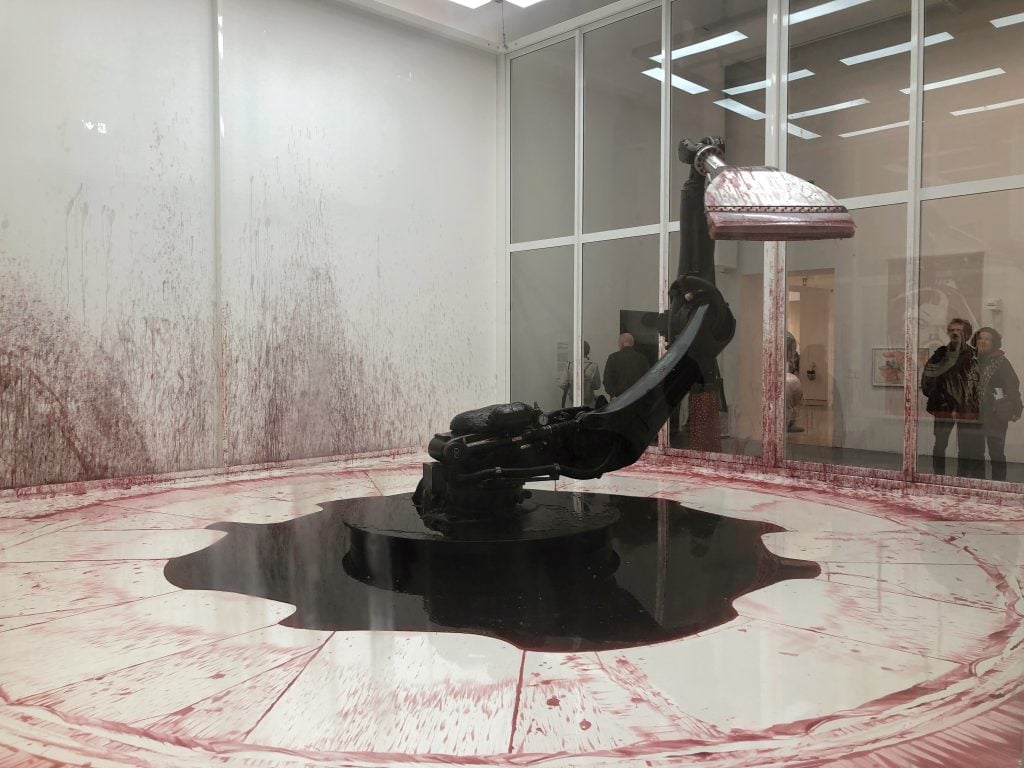
Sun Yuan and Peng Yu, Can’t Help Myself (2016). Collection of Yan Du Collection.
Who are some of the artists you are collecting now, or you think we should know?
I would really like to introduce a few Chinese artists: the artist-duo Sun Yuan and Peng Yu, and the artist Guan Xiao. When I first saw Sun Yuan and Peng Yu’s installation Can’t Help Myself, I was shocked, frightened, and excited at the same time. It really caught my attention in a way that was unforgettable, so I decided to acquire the work. The installation combines political metaphors, humanitarian and social issues while carrying a profound meaning of zen.
The beast-like monster brought forth by artificial intelligence presents itself to the viewer as a nervous visual pleasure. Can’t Help Myself is, to me, one of the rare great works of this century. I haven’t been this excited about collecting a work for a long time. Of course, the great feedback this work had at the Venice Biennale is also a reason to be proud.
Another artist I think people should know is Guan Xiao. She belongs to the younger generation of sculptors in China. Her work is outstanding and is representative of a female artist of the new generation. I’ve been following her work for some time, seeing how it develops. She has participated in many international biennials and institutional shows, and her works have a creative language that is very much in sync with what is happening around the world. Her pieces are three-dimensional collages of the post-image age, and they also contain anthropomorphic symbolism borrowing from the beginning of modernism; the works are sculptures and combine ready-made elements. Her works also carry a very contemporary feature, namely, anonymity—one of the global features of the digital age.
What are your goals and hopes for the future?
As someone who cares deeply about generations to come, I hope for world peace, the well-being of humankind, and the recovery of laughter, positive energy, happiness, and health.
